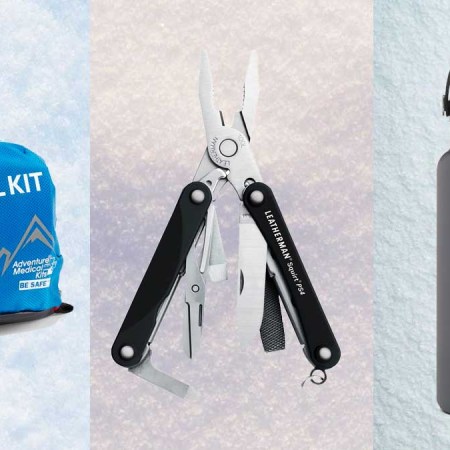You may not recognize Andrew Comrie-Picard’s name, but, like millions of other Americans, you are probably familiar with his work.
In addition to the upcoming Fast and Furious movie, Hobbs & Shaw, Comrie-Picard has handled stunt-driving duties on films such as Deadpool 2 and Atomic Blonde, as well as TV shows like Top Gear USA and Fastest Car.
It’s no surprise that’s how Comrie-Picard makes his money as he’s been pulling stunts behind the wheel since he was seven, the age at which he flipped his first pickup truck.
It’s a cool way to make a living. People probably actually want to hear everything about your job. But, despite sometimes getting to interact with Hollywood A-listers (“when you have Charlize Theron laughing in the car with you that that’s a good day at the office,” he tells InsideHook), pulling off stunts isn’t as exciting as you might think.

“There’s a lot of waiting around. It’s not all glamour. It’s hours of boredom punctuated by moments of terror. That’s how I once heard somebody who flew jumbo jets describe the career,” Comrie-Picard says. “We were in Hawaii for a month on Hobbs & Shaw, probably 10 or 12 of the best drivers in Hollywood. We could have done any car stunt in the world and there were entire days where we just sort of sat there in our wardrobe and they never got around to the shot. And then the director will say, ‘Okay, we’re doing it. Everybody suit up and get in your cars.’ And then the chopper flies and the jumps are set up and then sh*t goes down. And it could take a half-day to get that shot but the actual shot will be 15 seconds of driving and in the movie it’ll be a second and a half. So we were there for a month and we probably made, I don’t know, two minutes of the movie, something like that.”
Without having seen the film, which hits wide release on August 2, there’s no way to know for sure exactly what Comrie-Picard and his colleagues did in those two minutes but, being familiar with the Fast and Furious franchise, we’re guessing it involved some drifting.
As such, we thought Comrie-Picard would be a pertinent person to ask about the best way to drift a car in as safe a manner as possible.
“Doing a spin with a car or drifting a car is very different from driving a car well because actually what you’re trying to do is unsettle the car, so we tend to do things that you shouldn’t do, like turn the wheel and then pull the handbrake — which you should never do unless you have a huge parking lot or you’re a professional already,” Comrie-Picard says. “And even then you shouldn’t do it because it’s widely illegal. But you’re trying to unsettle the car, lock up the tires. And that’s why we all become big tire and traction geeks because we’re always flirting with the laws of physics.”
Below, you’ll find a little background on drifting as well as three steps to do it.
(Note: Don’t try this at home. And if you do, keep our, and Comrie-Picard’s, name out of it.)
Background on Drifting
“There are lots of different ways to initiate a drift. One is clutch kicking. Clutch kicking is basically keeping the engine revved up and dumping the clutch once and releasing it to break the rear tires free in a rear-wheel-drive vehicle. You can clutch drop, which is the downshift but not revving up the engine. But basically, some way to lock up the wheels to start the car sliding and then chasing that sliding end of the car with throttle applied to keep the wheel spinning just the right amount. If you spin them too much, you spin out. If you don’t spin them enough, they grip again and the car stops drifting. It’s just thinking through the physics of grip versus spin.“
Step 1: Get a Grip and Stay Safe
“Know your equipment. Know your car and know your tires. You need a tire with good, predictable traction. I recommend BF Goodrich. Number two, just find a big, big, big, big, big safe place. Make sure it’s safe. And keep your eyes up at all times.”
Step 2: Just Do It
“For a safer, higher-speed approach, accelerate first and then pull the handbrake. After that, steer into one direction and release the handbrake. Steer into the skid while chasing the skid with the throttle. If you turn first and then pull the handbrake, it’s a much more sudden move. Those are the two different approaches we use depending on what we want to achieve. Like on a movie, if the car’s just going to snap around, you turn first, then pull the handbrake. If you want a long smooth high-speed drift, it’s handbrake first and then turn.”
Step 3: Stop Thinking
“Stop thinking about it. You’ve got to feel it. Just find a big, big, big, big, big safe place and just figure out how it feels. Once you figure out how it feels, you’ll do well by not thinking about it. That’s why most of us who become pros in drifting or stunts or whatever were people who started messing around when they were seven years old, because on the day when the pressure’s on, it just has to be natural.”
This article was featured in the InsideHook newsletter. Sign up now.


















